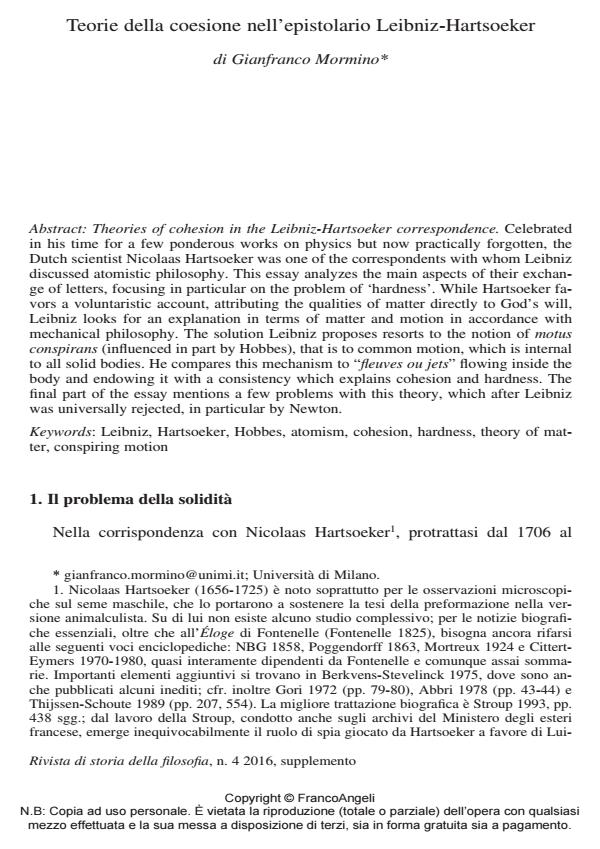Theories of cohesion in the Leibniz-Hartsoeker correspondence
Journal title RIVISTA DI STORIA DELLA FILOSOFIA
Author/s Gianfranco Mormino
Publishing Year 2016 Issue 2016/suppl. 4
Language Italian Pages 16 P. 215-230 File size 123 KB
DOI 10.3280/SF2016-004-S1015
DOI is like a bar code for intellectual property: to have more infomation
click here
Below, you can see the article first page
If you want to buy this article in PDF format, you can do it, following the instructions to buy download credits

FrancoAngeli is member of Publishers International Linking Association, Inc (PILA), a not-for-profit association which run the CrossRef service enabling links to and from online scholarly content.
Celebrated in his time for a few ponderous works on physics but now practically forgotten, the Dutch scientist Nicolaas Hartsoeker was one of the correspondents with whom Leibniz discussed atomistic philosophy. This essay analyzes the main aspects of their exchange of letters, focusing in particular on the problem of ‘hardness’. While Hartsoeker favors a voluntaristic account, attributing the qualities of matter directly to God’s will, Leibniz looks for an explanation in terms of matter and motion in accordance with mechanical philosophy. The solution Leibniz proposes resorts to the notion of motus conspirans (influenced in part by Hobbes), that is to common motion, which is internal to all solid bodies. He compares this mechanism to "fleuves ou jets" flowing inside the body and endowing it with a consistency which explains cohesion and hardness. The final part of the essay mentions a few problems with this theory, which after Leibniz was universally rejected, in particular by Newton.
Keywords: Leibniz, Hartsoeker, Hobbes, atomism, cohesion, hardness, theory of matter, conspiring motion
Gianfranco Mormino, Teorie della coesione nell’epistolario Leibniz-Hartsoeker in "RIVISTA DI STORIA DELLA FILOSOFIA" suppl. 4/2016, pp 215-230, DOI: 10.3280/SF2016-004-S1015